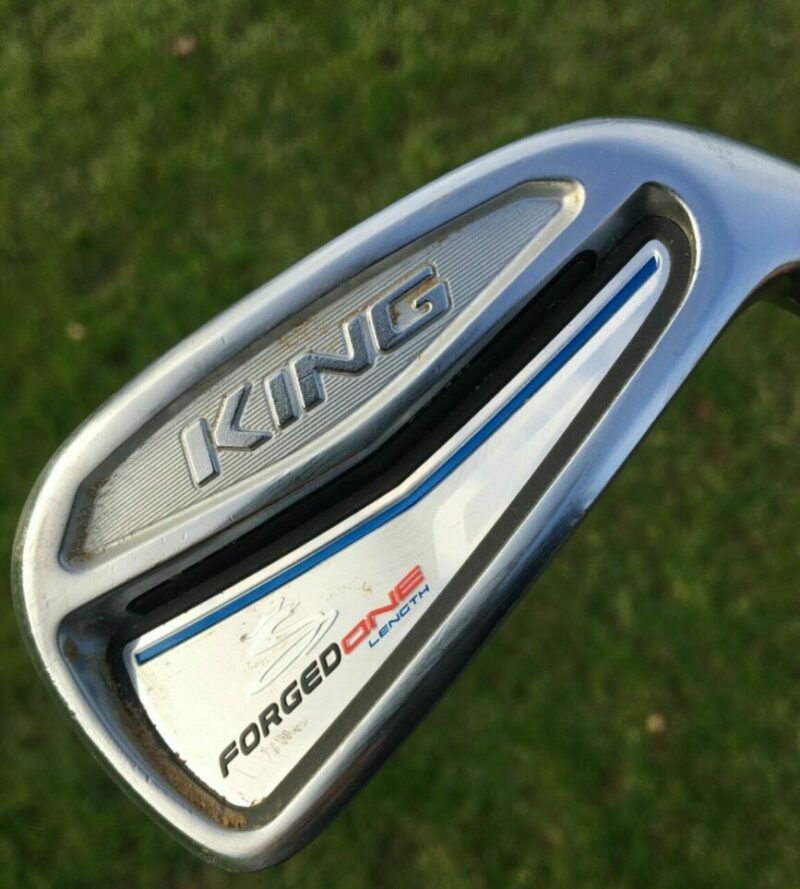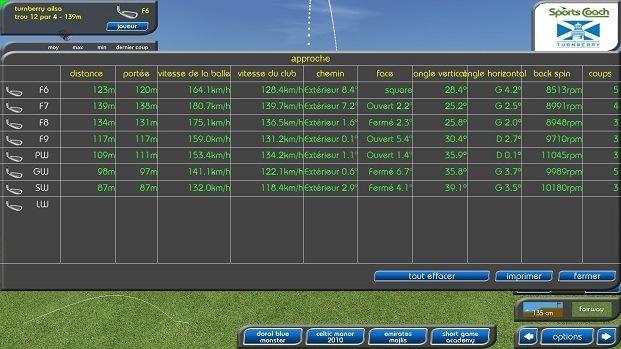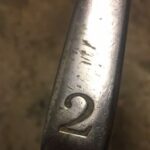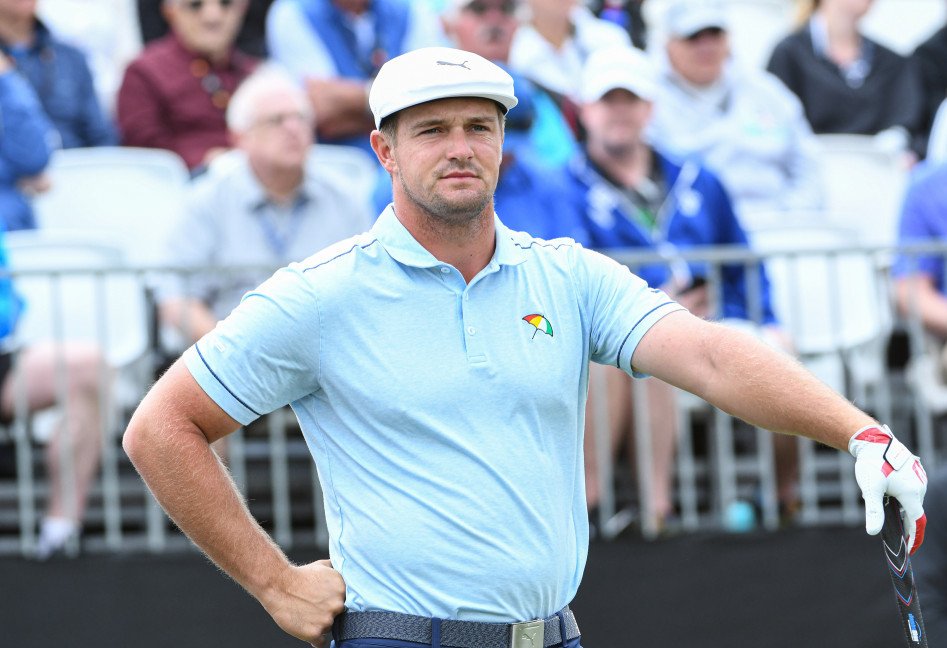Single length irons is hardly a new subject for fairwayfirstgolf. I have owned 4 sets and reviewed the pinhawk irons in detail. I feel like I have a good idea of what single length can offer to the average golfer as well as how to get the best out of any set. However, I do see a lot of the same questions coming up again and again, as well as a lot of often misguided “common knowledge.” Here is my attempt to put everything you need to know about buying and playing single length irons in one place. Hopefully this helps a few golfers to see a little more clearly.
What is a Single Length Iron Set?
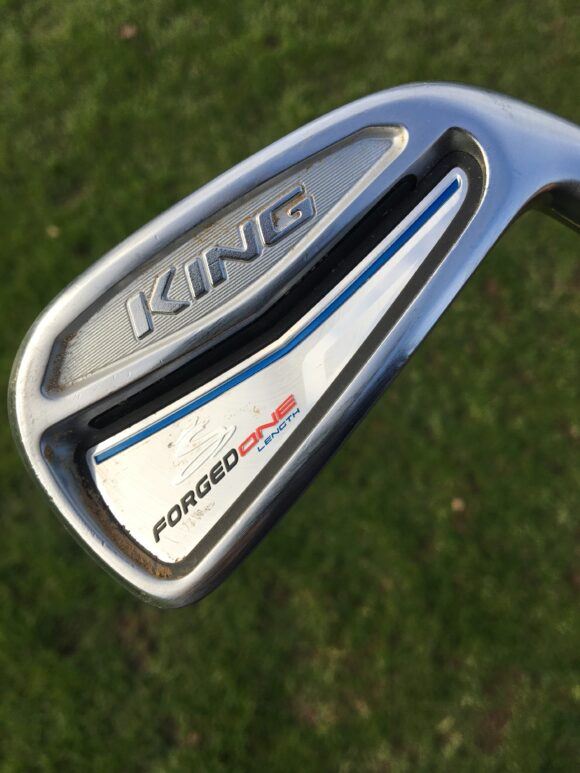
Let’s start with a definition. Obviously, single length iron sets mean that every iron is the same length, right? Ok, but does that mean that if you aren’t playing single length if you use “normal” wedges? what about the guy (or girl) who uses irons down to say 7, then goes to hybrids or fairway woods? and the more recent trend towards dual length sets? Some people get very precious about this. For me, deliberately matching lengths on all or part of a set falls under the single length umbrella.
Of course, there are differences, both good and bad, depending on just exactly how you go about setting up your own clubs, but it is a very personal thing. I have tried quite a few different combinations over the last few years and I will talk about a few of the things I have found to be true (at least for my game and for others I have played with) over this time.
Why Choose One Length?
Regardless of what you choose, what are the reasons why a golfer might consider going down the one length road? The most common one is the search for a more simple and repeatable golf swing. The idea of having one set up and one swing for most of your clubs is certainly attractive and should, at least in theory, make for better golf. In my experience, it isn’t quite as simple as this, but there is some truth there.
There is another less commonly-cited reason for giving single length a go and it is one that is particularly true for me. I am generally a good ball-striker with my irons. Not Sergio or Seve, but I probably hit it better than my 9 handicap would suggest. I really don’t have huge issues adjusting from one club to another, especially when the difference is really only an inch or two.
So what makes me so special? Nothing really, but I am a bit on the outside of the bell curve as far as height goes. I am 6ft 6 tall (or 1m98 if you prefer metric.) Not tall enough to look forward to millions playing in the NBA, but quite a bit taller than your average golfer. If I play a standard-length set, my pitching wedge is going to be about 35.5 inches. Whilst I often play standard length irons, people will generally comment that it looks like I am playing children’s clubs. I can feel that I am hunched over. as I get older, I am not sure this is the best thing in the world for my back health.
Easy fix-just lengthen my clubs. For example, my current set of Mizuno mp 64s is about an inch over length. I have had sets that were over 1.5″ over as well.
This does solve the “too short” problem, but it adds another. As I head to the other end of my set, my four iron is 40 inches long. Now I did say that I am decent ball striker, but a 40 inch iron is harder to hit well than a 38.5 inch one. And if you are an average 18 handicapper who happens to be very tall, your problems get incrementally worse.
Swingweight also becomes an issue. clubs 1.5″ longer can get very heavy and it can be difficult to find reasonable solutions to this without playing around with shaft/grip combinations. This is often expensive and at the very least needs a proper fitter to make it work.
A single length set solves this issue immediately. The last set I had were all 38 inches long (around a standard 5 or maybe 6 iron for most people.) I was comfortable over my “short” irons without feeling like my “long” irons had become unhittable. And the swingweight was the same for all clubs (in this case around d5 if I remember correctly, which was fine for me.)
Single Length Irons For Shorter Golfers
Of course, the same (but opposite) logic also works for shorter golfers. They might want to get their longer irons down to a more reasonable length without feeling like they are swinging a fishing rod. At the same time, having a pitching wedge that is too short might not be ideal either. A shorter golfer could also suffer from back issues and not want to be completely hunched over. Reducing length over the whole set could also lead to a very light swingweight which can lead to loss of feel and control.
This golfer might just feel perfectly at home with their irons all at 36 or 36.5 inches and a standard swingweight of D1 or whatever. This doesn’t mean that any golfer who fits somewhere in the middle of the bell curve shouldn’t try single length irons of course, but it does annoy me that this potential solution for a reasonable proportion of golfers of all handicap levels is so often ignored.
The Same Swing For All Clubs?
So let’s come on to the big question that is also used as the major selling point for a one length set:
Can I really use the same swing for all clubs?
The answer, frustratingly enough, is yes and no. This aspect of single length needs quite a bit more explanation than is usually given. Let’s start with the theory. All my irons are identical apart from loft. They are the same length, the same lie and the headweights and swingweights are the same. I put the ball in the same place in my stance and make the same swing and that’s it. Now every time I practice, hitting one iron (and it shouldn’t matter which) is the same as hitting all the irons and I have just cut my practice time drastically while improving at a similarly exponential rate.
This isn’t completely false, but there are some issues. The first one is swing speed. I have never seen someone who tries single length have the same swing speed throughout the set. For whatever reason, everyone will swing faster with the 4/5 irons and slower with the 9/pitch. Often, in fact almost always, this isn’t a deliberate choice and people are generally surprised that this is the case. I have found it to be true time and again and was always true with my sets. If we aren’t swinging at the same speed, then it isn’t really the same swing, is it?
Actually, it often is, or at least very close. Swing speed on its own doesn’t really change the path of the club. I have found that it does affect other things though. For example, If I have a one length four iron in my hand, I will certainly be swinging harder. I feel like it will be more difficult to elevate the ball and will need a more committed swing. As a result, I might find myself moving the ball slightly forward in my stance too, as I might with a standard longer iron. This ball position and extra speed are almost certainly going to impact shaft lean and angle of attack. The shaft itself is going to perform differently when being swung at 90 miles an hour as opposed to 70. This is certainly changing how the clubhead reacts and how it is delivered to the ball.
I’m sure you can see where I am going with this. The over-simplistic idea of one swing isn’t quite true. Bu neither is it completely false and it actually might not matter all all. Let me explain why I believe this to be the case.
Despite these differences, the uniformity of the set does have a big effect. When you pick up a single length five iron, it is a very comforting club to hit because it really doesn’t seem any different to the 8 or 9 iron you perhaps hit so well a few shots before. Even if the swing speed isn’t the same, this shouldn’t be that big of a deal. Many golfers will take a bit off a shot now and again so we are essentially hitting one club at various speeds quite regularly.
Hitting from Different Lies
It is also important to remember, as I have said many times before, that golf is a game played outside. This means that we don’t always have that perfectly flat lie. In fact, we very rarely have the exact same shot twice. Our brains deal with this stuff all the time and it is no different if you have a set of of Pinhawks or Cobras in your hand or a regular set of Mizunos or whatever.
You might be thinking that this makes single length redundant but that really isn’t the case. Coming back to my previous point, if you have to hit something off a lie with the ball miles above your feet, wouldn’t you rather play this with a club that feels familiar because it is the same in virtually every aspect to the rest of your set?
This argument is usually thrown around on golf forums by anyone wanting to knock single length. They will say that the whole concept is pointless because every swing isn’t going to be exactly the same. I don’t really bother answering this type of post anymore because I realised that it is generally coming from golfers who are looking to a reason not to like single length. And honestly, I don’t care. If you the reader, or indeed anyone, buys and uses a single length set it isn’t going to to change my life in any meaningful way. I don’t manufacture or sell them and I am certainly not sponsored by anyone! For full disclosure, Aaron at Valuegolf did give me a good deal on one of my sets of Pinhawk irons a few years ago, but this was simply a friendly gesture to help get them from the USA to France without shipping and taxes becoming ridiculous!
As I previously stated, I would much rather have my irons as a constant in changing course conditions that have them changing as well, especially as a less-experienced golfer.
Gripping Down on Single Length
The other idea that often comes out in relation to a one length set is that you “have to” grip them and swing them in an identical manner on every shot with every club. I really struggle with the logic here to be honest because it just adds a level of difficulty that we don’t need to use with any other set of clubs out there.
Of course it makes sense to have one swing and one set up for all full shots that are basically the same (ie, not trying to hit it low/high or shape the ball in a particular way.) This is the beauty of single length. There is a level of comfort that means that we stand a good chance of hitting a solid shot. However, making this some sort of rigid rule is missing the point of any iron set and especially single length.
The body is amazingly adaptable. If this wasn’t the case, we wouldn’t be able to hit normal irons, move from driver to wedge or indeed hit anything other than an full shot off a perfect lie! When I had my pinhawks in the bag, I would regularly grip down on them for different reasons. For example, I liked to hit some pitch shots like this. I also found that it was a good way of hitting my wedges a little lower because for me, as for many others, single length wedges tend to go very high (which is generally a good thing in my opinion.)
Does this mean that I couldn’t hit a full shot afterwards? Of course not! If I had my four iron off the next tee after chipping with a gripped down pitching wedge, it was still just as easy to take a full swing and be confident in the result. Generally, most irons swings for me are full swings so I would guess that 90% of my one length iron shots felt basically the same. This is one of the real joys of this sort of set.
Gapping with Single Length Irons
Gapping is an interesting subject, especially in relation to this type of set. There are certainly plenty of examples where gapping hasn’t been ideal for various golfers when they have tried to adopt single length. Once again, I don’t feel like I need to show that this isn’t the case. I don have a few thoughts that are worth bearing in mind though.
Generally, we all have an ideal of what gapping should look like for our golf bags. For me, for example, I like the idea of maybe a dozen metres./15 yards or so between clubs, especially irons. I like this because it makes sense to me and to the way I play.
I know some people prefer smaller gaps, maybe even 8 yards or so. Personally, I feel that I am just not good enough for this tight a gap to make any difference and it actually makes life harder for me. I often have 5 yards or more difference between what I would consider very well struck shots and if this is the case, what’s the point of having yardages that bleed into each other too much? I would rather have distinct gaps, but that might just be me.
I found that my gaps with every single length set I have played over a reasonable length of time, whether it is pinhawks, cobra forged, or Wishon Sterling, has, for the most part, been in line with my gapping from a standard iron set. You can see this in my test results from 5 years ago hitting the pinhawks on a monitor and I would bet a pound to a penny that these gaps would hold true on the course today if I were to put any particular set of (quality) one length clubs in the bag.
There are a couple of things to remember here though and perhaps one area of single length tech that can be problematic. Firstly, trajectory with one length sets tends to be different to normal irons and visually, this can be quite strange. A lot of people, especially faster swingers, find that wedges in particular go very high. This can give the impression that distance is quite different to a standard wedge. In my experience, actual distance is basically the same, but the ball does go though a different visual “window”.
Spin with these shorter clubs can be quite different too and this might be a real problem for some people. Someone who swings the club quite hard, especially if they are using one of the softer shafts found in off-the-rack single iron sets, might find spin numbers going off the charts. This can certainly affect how far the ball goes and actually be a real problem in windy conditions.
Of course, for many other golfers, this is a big plus. Getting wedges that go high and stop is quite a game-changer for slower swing speed golfers. For the faster swinger, there are a couple of ideas worth looking at.
Firstly, there is nothing wrong with a partial one length set. Using single length down to say a nine iron and then putting standard length wedges in the bag can be a solution.
The other thing that could be good is looking into fitting and especially shaft fitting. Personally, I have self-fitted my single length sets, ordering shafts that I know will be about right, so I can’t give a real in-depth insight into exactly what this might add, but something like the Edel fitting system would probably sort out a few of these issues. Edel uses high-end shafts with different profiles to deal with gapping/ball-flight issues when fitting for single length.
I would guess (and have heard) that the results and indeed the fitting process itself, are awesome but haven’t had first hand experience to back this up. In my opinion, this is perhaps worth it if you have already tried single length to see and obviously if your golfing budget allows it because a full set of fitted Edel single length irons, as amazing as they almost certainly are, isn’t in the same ball park as, for example, a set of Pinhawk irons, even if you start adding in a shaft upgrade and some nice grips.
Single Length Long Irons
I suppose long irons is something of a misnomer when talking about single length but I will stick with it for ease of understanding. Let’s say 5 iron and below, or perhaps more usefully, irons with loft of perhaps 25 degrees or less. This is worth looking at in a bit more detail because I think it is a problem area when thinking about a one length set up. Personally, I have played (not just once, but over a large number of rounds) a four iron or equivalent in three different types of sinlge iron sets. For reference these were:
Pinhawk 4 iron at 20 degrees
Wishon Sterling 5 iron (23 degrees, so a very low lofted 5 in my opinion)
Cobra forged one 4 iron (23 degrees)
I have a swing speed with a seven iron generally a little north of 85 miles an hour and sometimes closer to 90 when my back is giving me some peace! This would put me above average in terms of swing speed but certainly not pro speed.
The issue with these lower-lofted irons in relation to most of us is that it can simply be too hard to get the ball in the air with a shorter shaft on an iron (rather than a spring-faced wood or hybrid). A seven wood or three hybrid is generally going to be far easier to hit than a four iron for most golfers.
Personally, I found my results mixed. For example, I really enjoyed both the Cobra One and the Pinhawk 4 irons off the tee. The shorter shaft gave me a great sense of control and confidence aiming at a tight fairway. However, I definitely hit the ball lower. This is nice on firm fairways in the Summer, but not so good in the Winter when I lost a fair bit of distance.
On my home course, there is also a short, tight par four with a very big slope in front of the tee. A four iron distance would be perfect, but I really couldn’t comfortably get the ball up over the obstruction, even off a tee. And I quickly gave up on hitting either of these two off the fairway, maybe into a long par four or a par five.
The Sterling was actually a different kettle of fish altogether. Of course, it does have slightly more loft at 23 degrees compared to 20 , but the real difference to me was the high COR face. It felt a lot like hitting a hybrid and came off the club nice and high with an unusual (but not unpleasant) pingy sound. In fact, I used the five iron as a sort of safe club even when playing with a regular length set.
However, I think for a lot of us, we should take the same approach to single length that we might use with any other set. Forget the 3/4 and probably five irons and put higher-lofted fairway woods or hybrids in the bag. For those who really want to keep the single length theme running throughout their set, there are options now in single length hybrids which make this very easy to do.
But Pros Don’t Use Them!
Of course, one of the biggest areas of discussion around this subject is that they just aren’t used on tour. This is taken as ‘proof’ that the whole concept is more marketing than anything, but I am not sure this is the case. For me, what pros actually use on tour is interesting. I always like to see the “What’s in the Bag” features in magazines and online. However, I am very aware that it has little to no bearing on what I should have in my own golf bag!
Professional golfers are really good. I mean, really, really good! A PGA Tour player could borrow that ladies starter set in the pro shop and absolutely destroy well over 99% of the golfing population without breaking sweat. The fact that they choose one type of club over another is for completely different reasons than the rest of us.
It might be visually what they like or are used to because they grew up playing this type of iron. It is in a very large part because of what they are paid to play. There is also a lot of confidence in the club involved. Imagine if a pro moved into a single length set and results dropped off, life would become extremely difficult! Loss of earnings and media/public pressure would be huge.
Of course, this doesn’t mean that all pros are dying to play single length irons and are only stopped from doing so my equipment company contracts or potential loss of earnings. Essentially, they just don’t need the possible advantages that single length could provide.
As I mentioned previously, I enjoyed the idea that I could practise a little less with all clubs, at least on full swings, and still get benefits. For a pro, this is a non-issue. Their job is to play golf and as such, they spend their days doing this, working at their game and honing the different shots that they want to hit. Would single length make a difference to these guys and girls? I don’t know, but I don’t really think so.
I do think it is possible, even likely, that we will have more players turning up with single length over time though. This is because these clubs are now a (relatively small) fixture in the golf club world. This means that there will be juniors who will start with them and some of them will go on to play professionally. Given that they have always used single length, I would guess this will continue on tour. At this point, it might become financially viable for the rest of the equipment companies besides Cobra to release the single legnth options that they have inevitably been working on and we will probably see the market share of one length irons increase. This is only speculation of course, but does seem pretty likely.
Bryson: Bad Publicity?
Of course, the other issue with professional golfers and single length is the one professional that does use them: Bryson Dechambeau. His arrival on the golfing scene and particularly his success on tour in terms of winning a major was supposed to open the door to single length irons becoming popular.This is a purely personal opinion, but I think that in many ways he has done the opposite.
Bryson seems to have a public image that divides opinion. He is seen, I think, as someone who pushes things to extremes. This is true in plenty of aspects of his golfing game. Single length for starters, but also his extremely upright lie angles on his irons, using an armlock putter, allegedly floating his golf balls in epsom salts to check how they were balanced, bulking up in a quest for distance…. His public spat with Brooks Koepka was also something that didn’t necessarily put people on his side.
I think all this may have actually given ammunition to the anti-single length lobby and probably put a lot of people who perhaps could benefit off actually trying , which is a shame. I seems to me that Bryson’s image, personality or even reasons for playing his particular set up shouldn’t really matter very much at all to the rest of us.
Single Length Irons: The Short Version
Re-reading what I have typed here, it might come across as trying to convince people of the benefits of single length irons or maybe even that most people should have them in their bag. This isn’t the case, and I currently have a variable length set of mp 64s in my own set up.
It simply irks me that there is a lot of false knowledge put out from people who either have never tried these clubs, or who really don’t have an objective point of view (either for or against.) I think that single length irons offer an interesting alternative for many golfers, especially for those who are taller or shorter than the norm. I don’t think they should be accompanied with “you have to…” or “you can’t…” We have the same choices with them in terms of gripping down or hitting different shots than we do with any other set. There is also no reason why we can’t use a partial set of single length and combine with standard wedges at one end or some combination of woods and hybrids at the other.
If you have got this far, thanks for reading and I would encourage you to try single length out for yourself. If you would like anything specific answering or if I can explain something a little better, I would be happy to do so, just drop me a comment below and I will get back to you as soon as possible.

